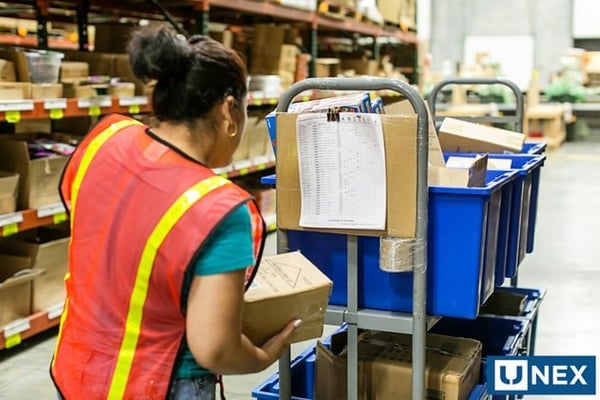The Evolving Warehouse Workforce
Last week, we discussed several major trends that are changing the way warehouses operate. One of these trends is the workforce itself.
In the past several years, the warehouse workforce has gone through a drastic evolution. What factors are driving these changes?
We identified three of these major factors: disruptive technology, demographics, and labor costs.

3 Key Factors For Warehouse Workforce Evolution
1. Disruptive Technology
We could talk for hours about emerging technologies changing the ways warehouse workers think and operate. From mobile technology to big data analytics to advanced robotics, the surge of technological development has helped to introduce new and more efficient methods on the warehouse floor.
Equipping their workforce with mobile tech has allowed managers and owners access to a treasure trove of valuable data like performance and footstep tracking, inventory and equipment status, and error reporting- just to name a few. This collection of data allows managers to take an analytical approach to warehouse operations. With more data comes a better understanding of the successes and failures of the workforce. This leads to better training as well as safety and process improvements.
Although robotics have been used in warehouse and manufacturing applications for quite some time, advanced capabilities and intelligence allows robotics to adapt to changing processes and environments. While we're still quite far from Skynet, these advanced robotics bring an unprecedented level of intelligence to automated processes in the warehouse.
Related Reading: Adapting NextGen Technologies- What's Stopping You?
2. Workforce Demographics
The United States is a nation of immigrants. Very few industries demonstrate the American melting pot more prominently than warehousing. However, with a diverse warehouse comes new challenges for managers- language barriers being one of the greatest.
As the ESL demographic of warehousing continues to grow, it's important to incorporate bi-lingual managers or workers into the mix who can effectively communicate with their co-workers. Signage and work instructions must also be considered when employing a diverse workforce.
Some solutions to this challenge include using symbology and imagery in work instructions instead of listing off procedures in English- or simply making work instructions available in your workforce's native language. When this solution is no longer cost-effective, many warehouses move towards pick-to-voice technology that offers instructions in multiple languages.
As the demographics of the warehouse continue to evolve, it becomes more and more important to ensure that effective and constructive communication can take place between the worker and the manager.
3. Warehouse Workforce Labor Costs
The cost of labor is both the largest cost of warehousing and the most volatile. As wages increase across the country, managers and owners need to ensure they keep their labor costs under control. This has led to several developments in the warehouse workforce. First, it has resulted in the workforce taking on more value-added operations like packaging and labeling.
Managers are also using analytics, as mentioned above, to spot deficiencies in processes in order to streamline workers' efforts and maintain a maximum level of productivity.
Many warehouses are also using automated processes to drive labor costs down. Eliminating manual, paper-driven practices like putting, picking, and shipping allows workers to be more accurate and more productive. As labor costs increase, productivity needs to increase to guarantee maximum value from your warehouse workforce.
Has your workforce experienced these changes? What challenges do your managers face when working with your warehouse workers? Contact us today to identify space optimization solutions that can help.



